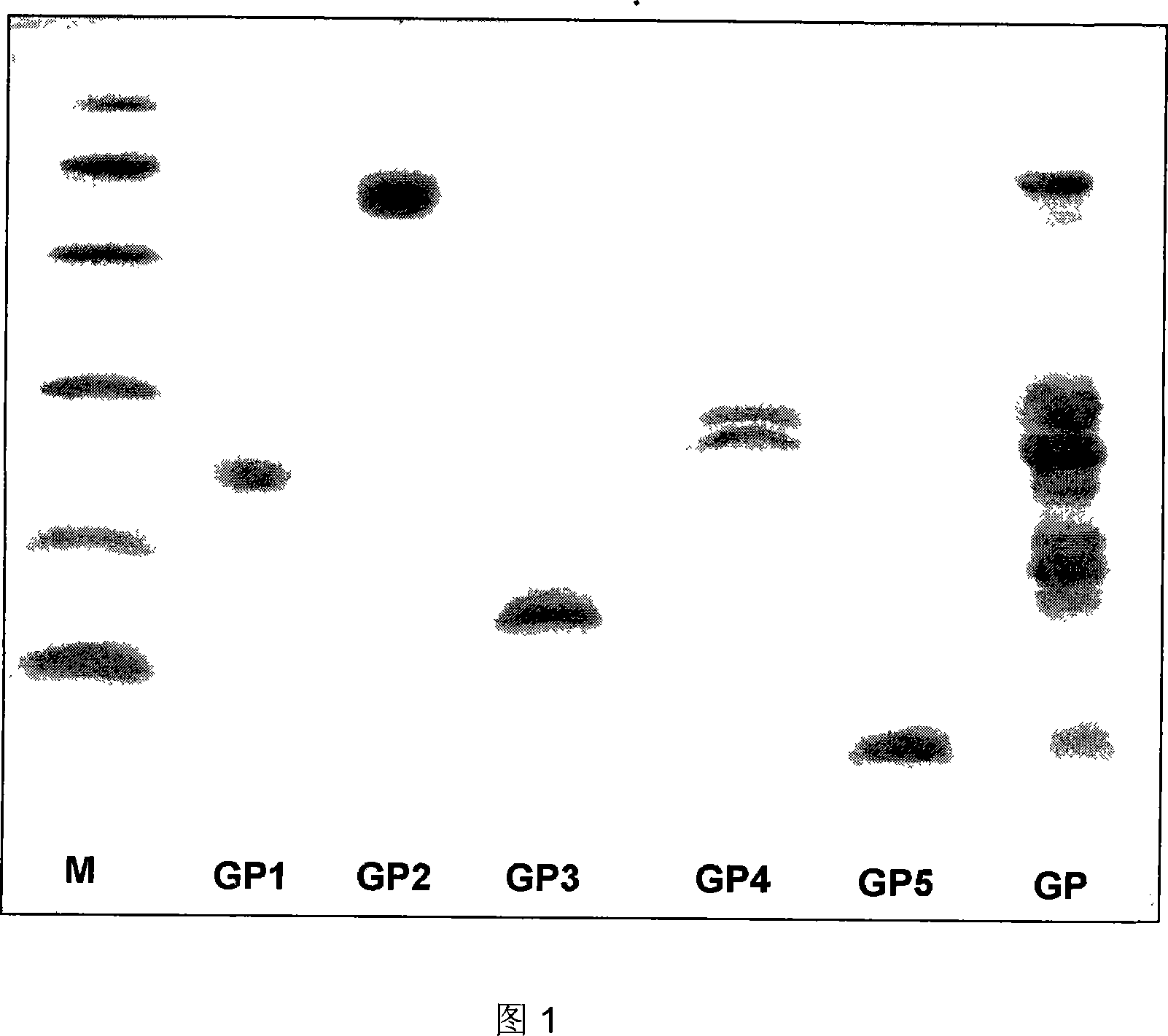Preparation method for separating and purifying water-soluble protein of ginseng
A water-soluble protein, separation and purification technology, applied in the field of separation, purification and preparation of ginseng water-soluble protein, can solve the problems of no antifungal, antiviral and anti-proliferation activities, and achieve a short cycle, quick effect and simple purification process. Effect
- Summary
- Abstract
- Description
- Claims
- Application Information
AI Technical Summary
Problems solved by technology
Method used
Image
Examples
Embodiment 1
[0020] Embodiment 1: Separation and purification of 5 kinds of ginseng proteins
[0021] 1. Extraction of total ginseng protein: Weigh 100g of fresh ginseng and cut it into small pieces, add 300ml of 0.01mol / L Tris-HCl buffer solution containing 0.15mol / L NaCl and pH=7.4 for homogenization, and add 3000ml of 0.15 0.01mol / L Tris-HCl buffer solution with mol / L NaCl pH=7.4 was extracted at 4°C for 24 hours, centrifuged at 4°C and 6000r / min for 30min to obtain 3100ml of supernatant; Then add 3000ml 0.01mol / L Tris-HCl buffer solution containing 0.15mol / L NaCl and pH=7.4 to the ginseng sediment, extract at 4°C for 24 hours, centrifuge at 4°C and 6000r / min 30min, to obtain 3000ml of supernatant; combine the supernatant obtained by 2 extractions to obtain 6100ml of ginseng total protein crude extract;
[0022] 2. Ammonium sulfate precipitation: Add 3148 grams of solid ammonium sulfate (80% saturation) to the crude extract of 6100ml ginseng total protein obtained in the above steps, l...
PUM
 Login to View More
Login to View More Abstract
Description
Claims
Application Information
 Login to View More
Login to View More - R&D
- Intellectual Property
- Life Sciences
- Materials
- Tech Scout
- Unparalleled Data Quality
- Higher Quality Content
- 60% Fewer Hallucinations
Browse by: Latest US Patents, China's latest patents, Technical Efficacy Thesaurus, Application Domain, Technology Topic, Popular Technical Reports.
© 2025 PatSnap. All rights reserved.Legal|Privacy policy|Modern Slavery Act Transparency Statement|Sitemap|About US| Contact US: help@patsnap.com

